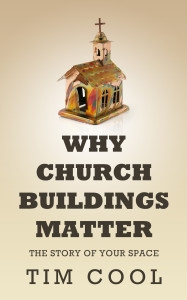
How to Utilize the Power of Story on Your Church’s Campus Facility
Over the past several years we have become acutely aware of the essence of “story.” We hear this term used in the church world and in business settings. It has been used to prompt people to open up about their lives and life experiences… to tell their story. On a corporate level it is the interwoven thread used to identify the mission, vision, direction, and passion of organizations.
The reality is, we all have a story. Some of these stories are sensational while others may seem mundane or routine. Others grip our emotions and pull on our heartstrings while transforming us into the story. What has struck me lately is that everyone has a story to tell and that people are reading— taking in— those stories even when we are not aware.
We do not have to write a screenplay or book to tell our story. When we walk into a room full of people, you will start to read certain aspects of people’s stories, and they will start to read yours as well. They might not see the entire story, but they will see some pretty obvious chapters in that story. The way you enter the room will tell the chapter of your story related to your self-confidence or possibly your physical attributes or limitations. The way you shake the hands of the other guests will convey yet another part of the story, as will the clothes you are wearing… and you may not have even said a word. In addition, the room itself tells a story.
Did you know that your church campus tells a story? Why Church Buildings Matter: The Story of Your Space offers a unique perspective on the importance of church buildings. These buildings are vastly more important than most understand. The church campus and the story of the people in the church go hand-in-hand and are interwoven into each other. We cannot neglect the power of story and how our church facilities communicate a story.
Church facilities and all of the things associated with “story” and “setting” will not save a person from a life of sin and frustration. But the lack of attention to these things can indeed be the road block to reaching those people that need to hear the gospel message the most. Don’t minimize their impact. That would be a huge mistake. “Story” is all around us, in virtually every aspect of our daily experiences, which means that our church and ministry facilities also tell a story. Here are a few important questions to ask about your church facilities:
- What story are your facilities or campus telling?
- Are we intentional about the telling our story through our facilities?
- Is the story congruent with who we are, who we think we are, what we believe and value, and who we want to reach for Christ?
Why Church Buildings Matter explores each of these areas in more detail. I believe as we become more acutely aware of the impact of our ministries’ unique stories, and how they impact our guests and the people God has called us to reach in our community, the greater the impact we will have on fulfilling our calling.
Get Tim’s book here.
Read more from Tim here.

Tags: Physical space, Space, Story, Tim Cool
























